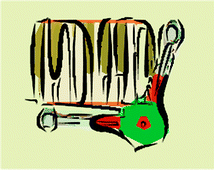A well-tempered density functional theory of electrons in molecules†
Abstract
This Invited Article reports extensions of a recently developed approach to density functional theory with correct long-range behavior (R. Baer and D. Neuhauser, Phys. Rev. Lett., 2005, 94, 043002). The central quantities are a splitting functional γ[n] and a complementary exchange–correlation functional EγXC[n]. We give a practical method for determining the value of γ in molecules, assuming an approximation for EγXC is given. The resulting theory shows good ability to reproduce the ionization potentials for various molecules. However it is not of sufficient accuracy for forming a satisfactory framework for studying molecular properties. A somewhat different approach is then adopted, which depends on a density-independent γ and an additional parameter w eliminating part of the local exchange functional. The values of these two parameters are obtained by best-fitting to experimental


 Please wait while we load your content...
Please wait while we load your content...